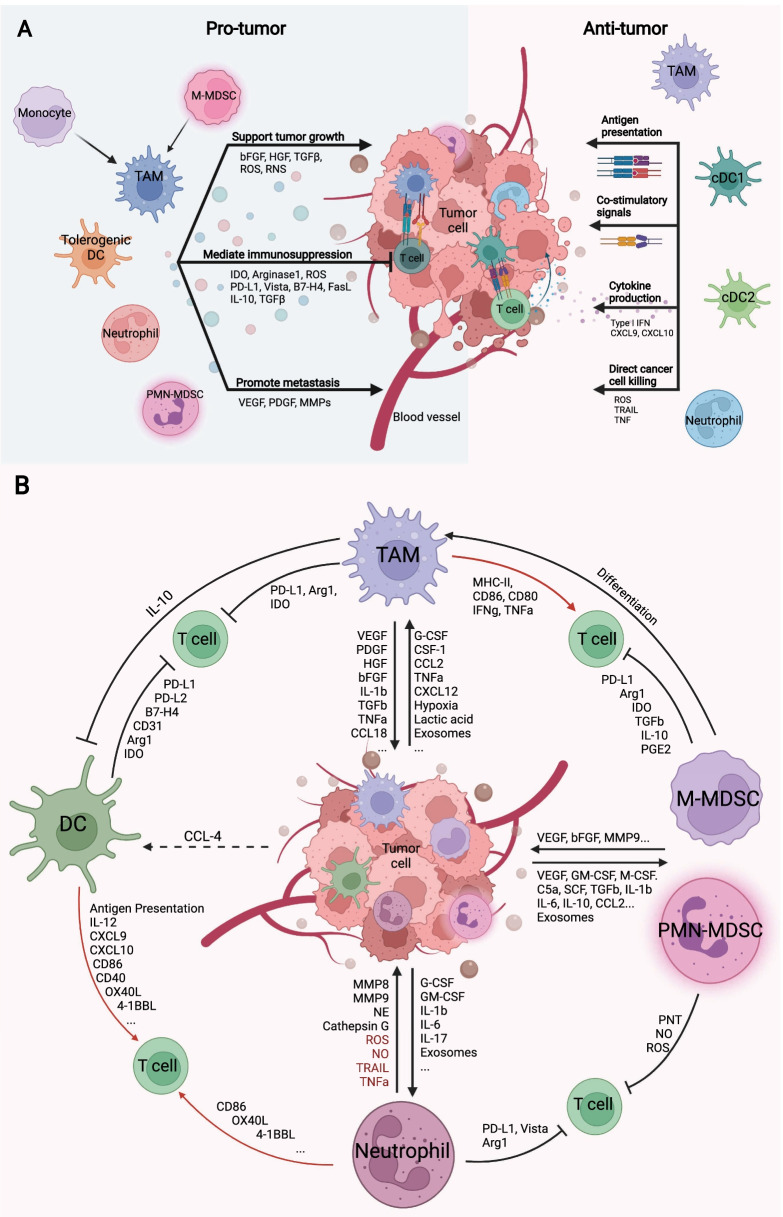Fig. 1.
Myeloid cells in the TME: friend or foe? A. Myeloid cells can be molded by the TME or therapeutic strategies to exert either pro-tumor or anti-tumor functions. TAMs, tolerogenic DCs, neutrophils, and MDSCs mainly foster cancer progression through supporting tumor cell transition and proliferation, promoting metastasis through enhanced vascularization and preparation of metastatic niche, as well as mediating immunosuppression, through the secretion of soluble factor, extracellular vesicles or direct ligand–receptor interaction. TAMs, DCs, and neutrophils can be programmed toward an anti-tumor phenotype. cDC1s and cDC2s are major APCs that present tumor-associated antigens to T cells and prime T cell responses. TAMs can be reprogrammed to serve as APCs. Both TAMs and DCs, once properly activated, express cytokines such as type I IFN, CXCL9, and CXCL10 to recruit T cells into the TME. Neutrophils can perform direct cancer killing through the generation of ROS or indirect killing induced by death signals such as TRAIL and TNF. B. Summary of the cross talk between myeloid cells and tumor cells in the TME. Tumor cells secreted a variety of soluble factors including chemo attractants that recruit myeloid cells. The recruited myeloid cells further amplify these signals and in turn fuel tumor growth and metastasis by producing factors that remodulate surrounding tissue structure, growth factors, and immunosuppressive molecules. Red: anti-tumor effects; Black: pro-tumor effects

